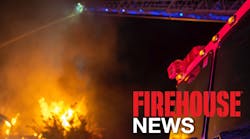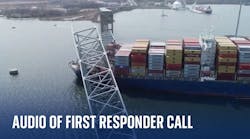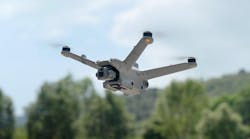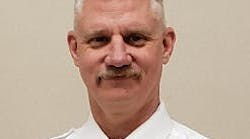BULLHEAD CITY, Ariz. (AP) -- Thick smoke limited visibility to less than three feet in the already dark mobile home.
A child was trapped somewhere in the burning residence and would not last long in the oxygen-void conditions.
On hands and knees and in a single file line, four firefighters pulled a hose, heavy tools and a thermal imaging camera through tight hallways and around blind corners, systematically scanning the building for signs of life.
And this was an easy drill.
Digital cameras are all the rage these days, but a specialized camera obtained by Fort Mojave Mesa and Bullhead City firefighters tops them all.
Used by the firefighters in a simulated house fire in September, the two thermal imaging cameras allowed rescuers to see through smoke and darkness by sensing heat rather than light. A pitch black room can come to life on one of the small digital screens with the push of a button.
Black smoke that the brightest of flashlights could not cut through does not even register on these handheld cameras.
To try out the new-age technology, the rescue workers tried searching for a mannequin the size of a 10-year-old boy in the drill.
A mobile home that serves as a training facility at Station 92 was completely filled with theatrical smoke and firefighting teams took turns searching for the mock victim, first with just flashlights and their hands and then again with the aid of the camera.
Guided by the glowing light of the thermal imaging camera, the firefighters made their way to the back of the building.
Children, frightened by smoke and fire, often hide in corners or under beds. As the crew scoured the indistinct rooms with a wall on one side and the hose on their other, one firefighter found the mannequin in a closet and grabbed it.
Firefighters said the camera gave them a noticeable advantage in their ability to navigate through an unfamiliar home.
Even though the smoke in the mobile home was heavy, crews said it was nothing compared to the black clouds and intense heat produced by an active blaze. And in that type of situation these electronic eyes can be even more beneficial.
Fort Mojave Training Chief Don Fisher said the camera can cut rescue time in half and is now a requirement on all fire calls that may involve a trapped victim.
``We have it written as a standard operating procedure that whenever there is suspicion that there's somebody inside that the search crew takes that camera in,'' Fisher said.
Fisher and Bullhead City Fire Department Training Chief Bill Kinsey said the cameras can be used for much more than finding victims. The temperature sensing lenses can aid firefighters in locating the exact source of fires, determining whether fires are fully extinguished, detecting hazardous materials and even locating people lost or injured in the desert.
Bullhead City police and the Department of Public Safety Ranger helicopter take advantage of the same technology for law enforcement uses, both from ground level and from the air.
Although the cost of these advanced cameras has dropped significantly in the past several years from a hefty $25,000 each as microtechnology has improved, the Fort Mojave department spent approximately $8,000 for their equipment and the three Bullhead City cameras cost about $15,000 each.
Still, because of the increased safety and efficiency for firefighters, both departments have plans to equip all of their stations with one of the cameras by the end of the next budget year.





